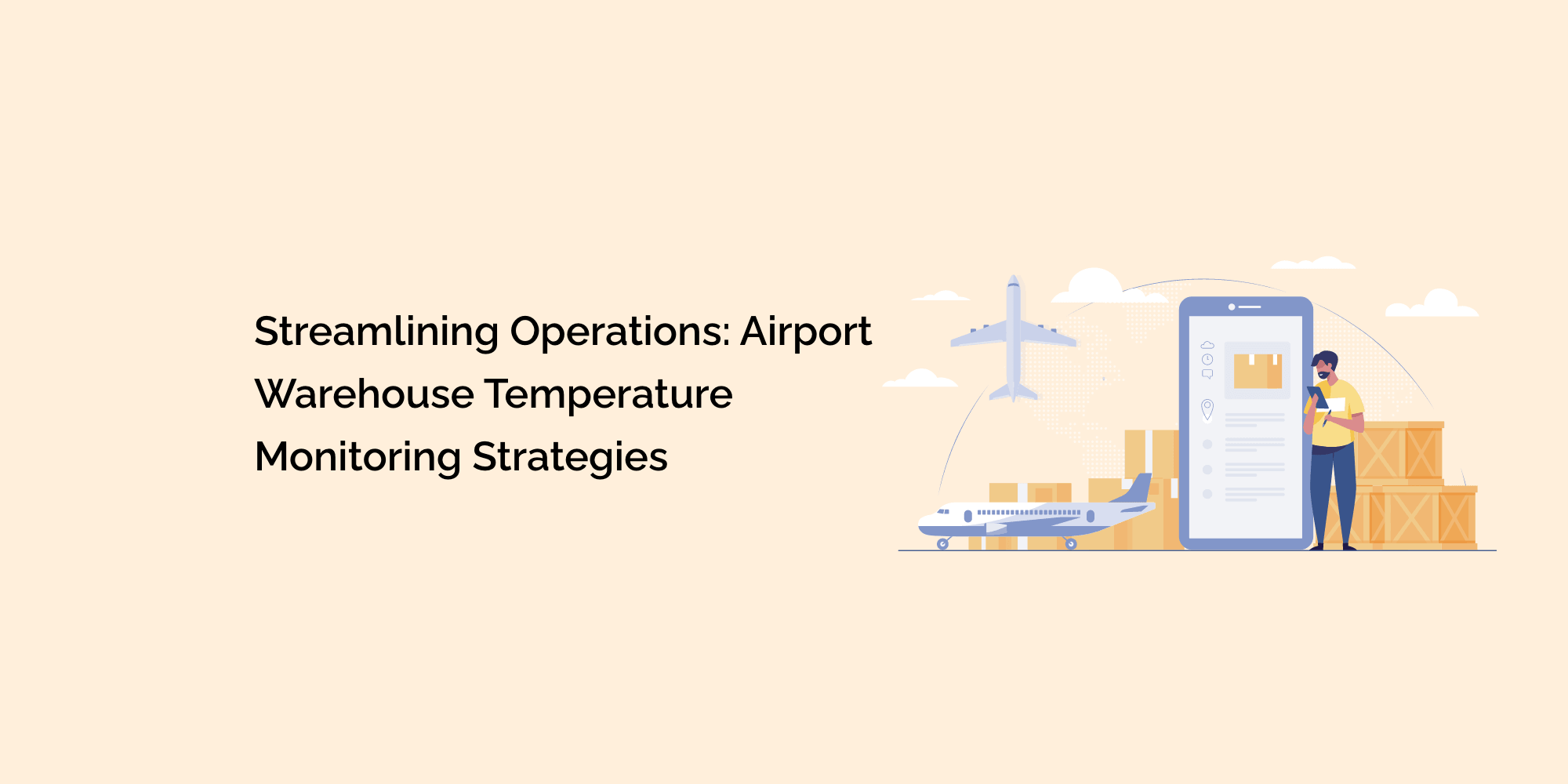Airport warehouses play a critical role in the seamless movement of goods, including temperature-sensitive cargo, between destinations. Proper temperature control is essential to ensure that perishable items, pharmaceuticals, electronics, and other sensitive products maintain their quality throughout the logistics process.
Temperature monitoring in airport warehouses is a key component of streamlining operations, minimizing delays, and safeguarding valuable cargo.
In this blog, we will explore various temperature monitoring strategies to enhance efficiency, reduce costs, and improve overall warehouse operations.
Integrated Automated Systems
Implementing integrated automated temperature monitoring systems is a foundational strategy for streamlining operations in airport warehouses. These systems utilize advanced sensor technology and software to monitor temperature conditions continuously.
a. Real-time Data Collection:
Sensors placed strategically throughout the warehouse collect real-time temperature data and relay it to a central monitoring system. This enables warehouse staff to have instant access to critical information.
b. Cloud-based Solutions:
Cloud-based temperature monitoring systems offer greater flexibility and accessibility, allowing authorized personnel to access temperature data remotely, even from mobile devices.
c. Integration with Warehouse Management Systems (WMS):
Seamless integration with the WMS enables real-time tracking of temperature-sensitive cargo, automates temperature control processes, and enhances decision-making based on data-driven insights.
d. Customizable Alerts:
Automated systems can be configured to send alerts via email, SMS, or mobile app notifications when temperature thresholds are breached, allowing for immediate corrective actions.
Zones and Monitoring Points
Airports warehouses are often vast, comprising multiple storage areas, each with unique temperature requirements. Implementing zones and monitoring points ensures that the entire warehouse is covered, and cargo is kept within the appropriate temperature range.
a. Zone Designation:
Divide the warehouse into temperature-controlled zones based on specific product requirements, regulatory guidelines, or shipment destinations.
b. Strategic Sensor Placement:
Install temperature sensors at strategic monitoring points within each zone, such as entry and exit doors, loading bays, and areas prone to temperature fluctuations.
c. Multi-point Verification:
For critical zones, deploy redundant sensors to verify temperature accuracy and ensure consistent monitoring.
Remote Monitoring and Control
Airport warehouse operations often require staff to be mobile and multitask. Remote temperature monitoring and control offer significant advantages in terms of operational efficiency and response time.
a. Mobile Applications:
Develop user-friendly mobile applications that allow staff to monitor temperature conditions, receive alerts, and adjust temperature settings remotely.
b. Remote Troubleshooting:
In the event of a temperature deviation, technicians can access the monitoring system remotely to diagnose and troubleshoot issues, reducing downtime and minimizing disruptions.
c. Automated Temperature Adjustment:
Utilize remote monitoring capabilities to automate temperature adjustments, such as activating cooling systems or adjusting climate control settings, based on real-time data.
Predictive Analytics and AI
Integrating predictive analytics and artificial intelligence (AI) into temperature monitoring systems can revolutionize airport warehouse operations by proactively addressing potential issues and optimizing temperature control.
a. Data Analysis:
AI algorithms can analyze historical temperature data to identify patterns, forecast potential temperature fluctuations, and predict maintenance needs for equipment.
b. Predictive Maintenance:
With AI-powered predictive maintenance, warehouses can schedule equipment maintenance before failures occur, reducing downtime and ensuring optimal functionality.
c. Supply Chain Optimization:
By combining temperature data with other supply chain variables, AI can optimize routes, storage locations, and transportation to minimize temperature-related risks.
Standard Operating Procedures (SOPs) and Training
Implementing well-defined SOPs and providing comprehensive training for warehouse personnel are crucial for effective temperature monitoring and streamlined operations.
a. SOP Development:
Develop clear and detailed SOPs for temperature monitoring, data interpretation, response protocols, and equipment maintenance.
b. Staff Training:
Regularly train warehouse staff on temperature monitoring best practices, use of monitoring systems, and emergency response procedures.
c. Cross-functional Collaboration:
Encourage collaboration between different departments, such as operations, logistics, and quality assurance, to ensure a holistic approach to temperature control.
Compliance and Documentation
Airport warehouses, especially those handling pharmaceuticals and healthcare products, must adhere to strict industry regulations. Proper compliance and documentation are essential for smooth operations.
a. Regulatory Compliance:
Ensure that temperature monitoring systems meet relevant regulatory standards and guidelines for temperature-sensitive cargo.
b. Audit Trail:
Maintain a comprehensive audit trail of temperature data and monitoring activities to demonstrate compliance during audits and inspections.
c. Reporting and Analytics:
Utilize temperature monitoring data to generate reports for regulatory agencies, customers, and internal stakeholders to showcase compliance efforts.
Conclusion
Airport warehouse temperature monitoring is a mission-critical aspect of streamlining operations and ensuring the safe and efficient movement of temperature-sensitive cargo. By adopting integrated automated systems, strategically implementing zones and monitoring points, embracing remote monitoring and control, harnessing the power of predictive analytics and AI, implementing SOPs, and prioritizing compliance and documentation, airport warehouses can optimize their operations and enhance their reputation as reliable logistics partners.
Continuous improvement in temperature monitoring technology, combined with well-trained personnel and robust SOPs, will lead to more efficient warehouse operations, minimized risks of temperature-related incidents, and greater customer satisfaction. As the global logistics landscape continues to evolve, airport warehouses that prioritize temperature monitoring strategies will remain at the forefront of streamlined and secure cargo handling.








